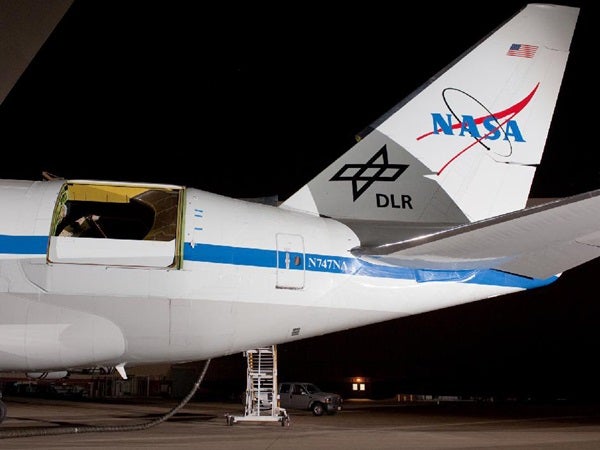A NASA jumbo jet that will help scientists unlock the origins of the universe with infrared observations reached a milestone December 18 when doors covering the plane’s telescope were fully opened in flight.
The Stratospheric Observatory for Infrared Astronomy, a modified 747 jet known as SOFIA, flew for one hour and 19 minutes, which included 2 minutes with the telescope’s doors fully opened. The goal was to allow engineers to understand how air flows in and around the telescope. It was the first time outside air has interacted with the part of the plane that carries the 98-inch (249-centimeter) infrared telescope.
“Today we opened the telescope cavity door, the first time we have fully exposed the telescope and the largest cavity ever flown while in flight,” said Bob Meyer, SOFIA program manager at NASA’s Dryden Flight Research Center in Edwards, California. “This is a significant step toward certifying NASA’s next great observatory for future study of the universe.”
Besides these test flights of the airplane, two flights to operate and verify the scientific capabilities of the telescope assembly are planned for spring 2010. Telescope systems such as the vibration isolation system, the inertial stabilization system, and the pointing control system will be tested during daytime flights.
These flights will prepare the telescope assembly for the first flight with the telescope operating. That first flight will be the initial opportunity scientists have to use the telescope and begin the process of quantifying its performance to prepare for SOFIA’s planned 20-year science program.










